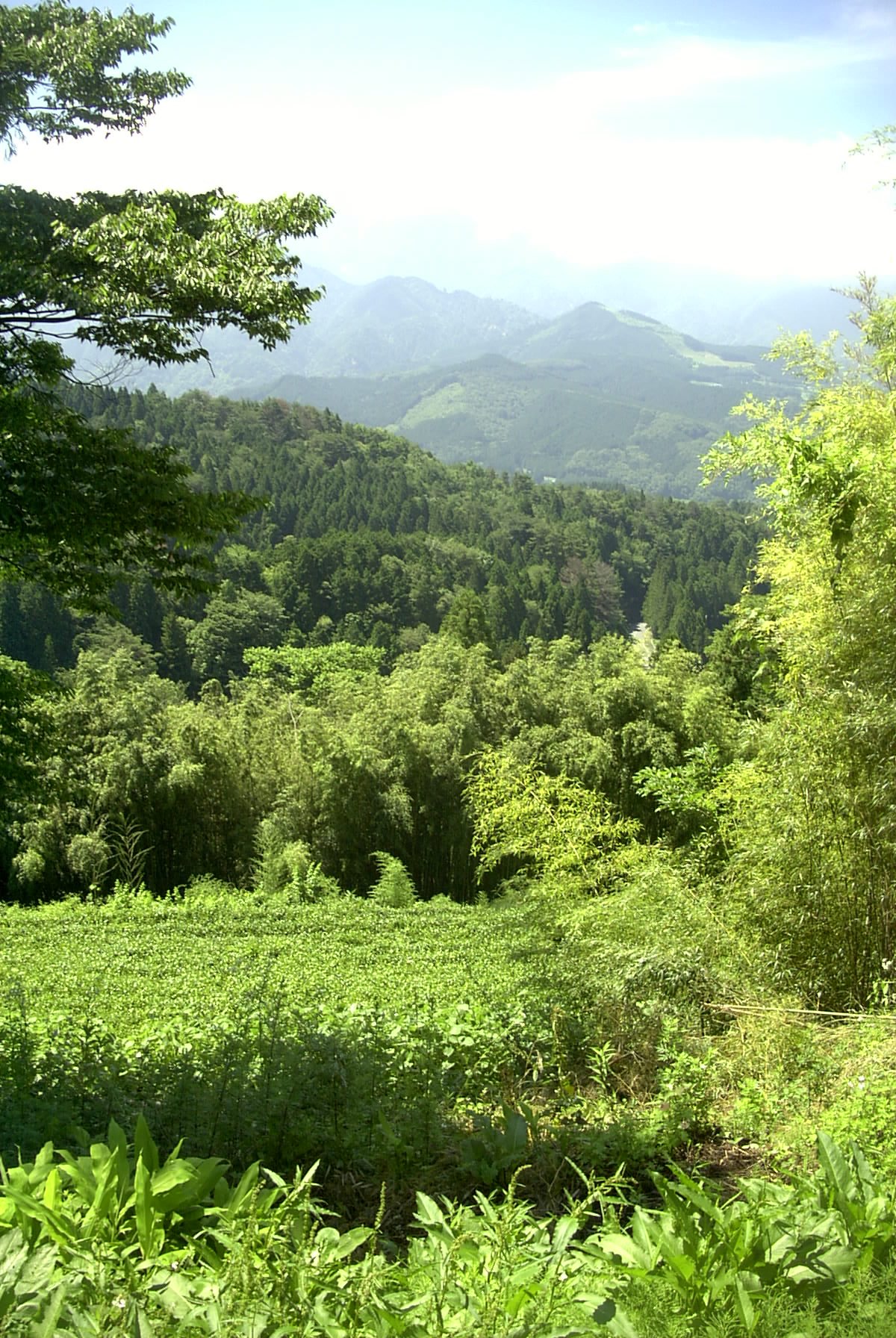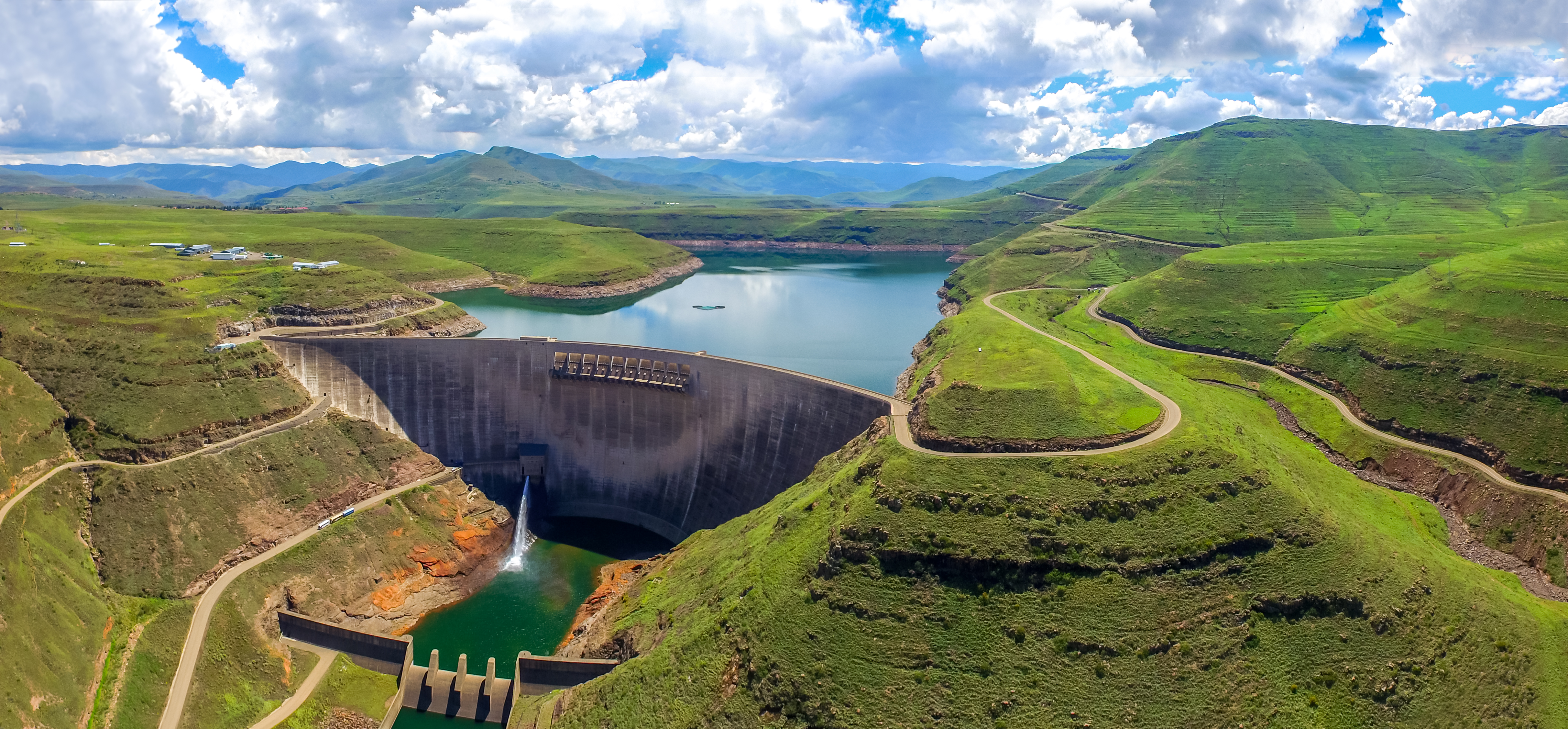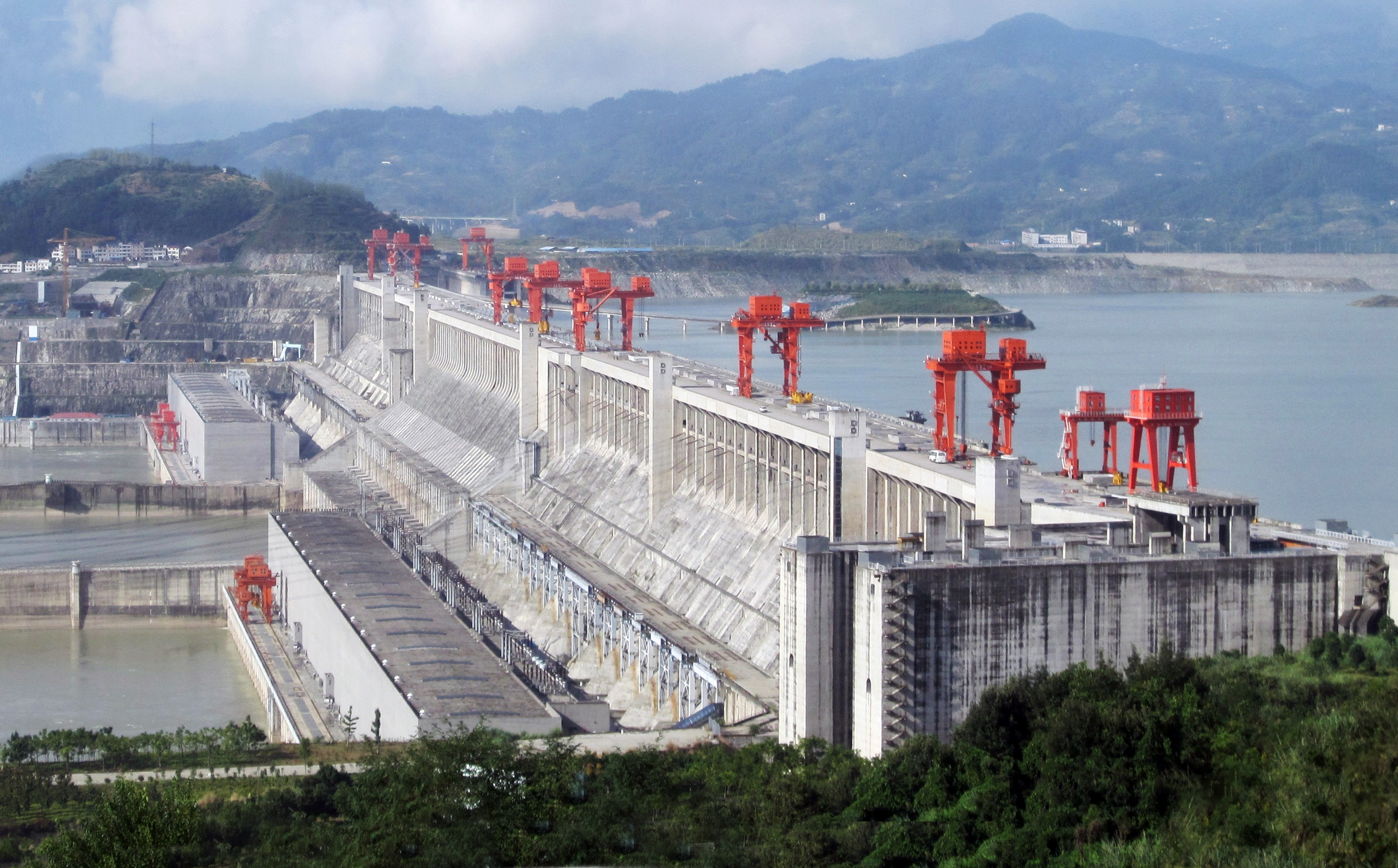|
Takane Dam
is a concrete arch dam in the city of Takayama, in the Gifu Prefecture of Japan. It supports a 340 MW hydroelectric power station. The dam is located in the upstream region of the Hida River The has its source in Mount Norikura (乗鞍岳 ''Norikura-ga-take'') in Takayama, Gifu Prefecture, Japan. It flows from the northern to the southern section of the prefecture before emptying into the Kiso River in Minokamo. River communiti ..., which is part of the Kiso River system. The dam was constructed exclusively for hydroelectric power generation and is managed by the Chubu Electric Power Company. It is the highest dam on the Hida River, with a height of 133 meters. The reservoir created by the dam also serves as pumped storage facility for the Takane Daiichi Power Station, and with a lower adjustment reservoir directly downstream created by the Takane No.2 Dam, forms the largest hydropower station in the Hida River basin with a maximum of 340,000 kilowatts of power gen ... [...More Info...] [...Related Items...] OR: [Wikipedia] [Google] [Baidu] |
Hida River
The has its source in Mount Norikura (乗鞍岳 ''Norikura-ga-take'') in Takayama, Gifu Prefecture, Japan. It flows from the northern to the southern section of the prefecture before emptying into the Kiso River in Minokamo. River communities The river passes through or forms the boundary of the communities listed below. ;Gifu Prefecture: : Takayama, Gero, Shirakawa ( Ōno District), Yaotsu, Hichisō, Kawabe, Minokamo is a city located in Gifu, Japan. , the city had an estimated population of 56,972 and a population density of 74.81 persons per km2, in 22,508 households. The total area of the city was . Geography Minokamo is located in south-central Gifu Pref ... References External links (mouth) Rivers of Gifu Prefecture Rivers of Japan {{Japan-river-stub ... [...More Info...] [...Related Items...] OR: [Wikipedia] [Google] [Baidu] |
Takayama, Gifu
Takayama City Hall is a city located in Gifu Prefecture, Japan. , the city had an estimated population of 88,473 in 35,644 households, and a population density of 41 persons per km2. The total area of the city was making it the largest city by area in Japan. The high altitude and separation from other areas of Japan kept the area fairly isolated, allowing Takayama to develop its own culture over about a 300-year period. Etymology The city is popularly known as in reference to the old Hida Province to differentiate it from other places named Takayama. The name 'Takayama' means 'tall mountain'. Geography Takayama is located in northern Gifu Prefecture, in the heart of the Japanese Alps. Mount Hotakadake is the highest point in the city at . The city has the largest geographic area of any municipality in Japan. Neighbouring municipalities *Gifu Prefecture ** Hida ** Gujō **Gero ** Shirakawa *Nagano Prefecture ** Ōmachi **Matsumoto ** Kiso *Toyama Prefecture **Toyama *Ishika ... [...More Info...] [...Related Items...] OR: [Wikipedia] [Google] [Baidu] |
Gifu Prefecture
is a Prefectures of Japan, prefecture of Japan located in the Chūbu region of Honshu. Gifu Prefecture has a population of 1,991,390 () and has a geographic area of . Gifu Prefecture borders Toyama Prefecture to the north; Ishikawa Prefecture to the northwest, Fukui Prefecture and Shiga Prefecture to the west, Mie Prefecture to the southwest, Aichi Prefecture to the south, and Nagano Prefecture to the east. Gifu is the capital and largest city of Gifu Prefecture, with other major cities including Ōgaki, Kakamigahara, and Tajimi. Gifu Prefecture is located in the center of Japan, one of only eight landlocked prefectures, and features the country's center of population. Gifu Prefecture has served as the historic Intersection (road), crossroads of Japan with routes connecting the east to the west, including the Nakasendō, one of the Edo Five Routes, Five Routes of the Edo period. Gifu Prefecture was a long-term residence of Oda Nobunaga and Saitō Dōsan, two influential figure ... [...More Info...] [...Related Items...] OR: [Wikipedia] [Google] [Baidu] |
Japan
Japan ( ja, 日本, or , and formally , ''Nihonkoku'') is an island country in East Asia. It is situated in the northwest Pacific Ocean, and is bordered on the west by the Sea of Japan, while extending from the Sea of Okhotsk in the north toward the East China Sea, Philippine Sea, and Taiwan in the south. Japan is a part of the Ring of Fire, and spans an archipelago of 6852 islands covering ; the five main islands are Hokkaido, Honshu (the "mainland"), Shikoku, Kyushu, and Okinawa. Tokyo is the nation's capital and largest city, followed by Yokohama, Osaka, Nagoya, Sapporo, Fukuoka, Kobe, and Kyoto. Japan is the eleventh most populous country in the world, as well as one of the most densely populated and urbanized. About three-fourths of the country's terrain is mountainous, concentrating its population of 123.2 million on narrow coastal plains. Japan is divided into 47 administrative prefectures and eight traditional regions. The Greater Tokyo Ar ... [...More Info...] [...Related Items...] OR: [Wikipedia] [Google] [Baidu] |
Hectares
The hectare (; SI symbol: ha) is a non-SI metric unit of area equal to a square with 100-metre sides (1 hm2), or 10,000 m2, and is primarily used in the measurement of land. There are 100 hectares in one square kilometre. An acre is about and one hectare contains about . In 1795, when the metric system was introduced, the ''are'' was defined as 100 square metres, or one square decametre, and the hectare (" hecto-" + "are") was thus 100 ''ares'' or km2 (10,000 square metres). When the metric system was further rationalised in 1960, resulting in the International System of Units (), the ''are'' was not included as a recognised unit. The hectare, however, remains as a non-SI unit accepted for use with the SI and whose use is "expected to continue indefinitely". Though the dekare/decare daa (1,000 m2) and are (100 m2) are not officially "accepted for use", they are still used in some contexts. Description The hectare (), although not a unit of SI, ... [...More Info...] [...Related Items...] OR: [Wikipedia] [Google] [Baidu] |
Arch Dam
An arch dam is a concrete dam that is curved upstream in plan. The arch dam is designed so that the force of the water against it, known as hydrostatic pressure, presses against the arch, causing the arch to straighten slightly and strengthening the structure as it pushes into its foundation or abutments. An arch dam is most suitable for narrow canyons or gorges with steep walls of stable rock to support the structure and stresses. Since they are thinner than any other dam type, they require much less construction material, making them economical and practical in remote areas. Classification In general, arch dams are classified based on the ratio of the base thickness to the structural height (b/h) as: * Thin, for b/h less than 0.2, * Medium-thick, for b/h between 0.2 and 0.3, and * Thick, for b/h ratio over 0.3. Arch dams classified with respect to their structural height are: * Low dams up to , * Medium high dams between , * High dams over . History The develop ... [...More Info...] [...Related Items...] OR: [Wikipedia] [Google] [Baidu] |
Hydroelectric
Hydroelectricity, or hydroelectric power, is electricity generated from hydropower (water power). Hydropower supplies one sixth of the world's electricity, almost 4500 TWh in 2020, which is more than all other renewable sources combined and also more than nuclear power. Hydropower can provide large amounts of low-carbon electricity on demand, making it a key element for creating secure and clean electricity supply systems. A hydroelectric power station that has a dam and reservoir is a flexible source, since the amount of electricity produced can be increased or decreased in seconds or minutes in response to varying electricity demand. Once a hydroelectric complex is constructed, it produces no direct waste, and almost always emits considerably less greenhouse gas than fossil fuel-powered energy plants. [...More Info...] [...Related Items...] OR: [Wikipedia] [Google] [Baidu] |
Power Station
A power station, also referred to as a power plant and sometimes generating station or generating plant, is an industrial facility for the generation of electric power. Power stations are generally connected to an electrical grid. Many power stations contain one or more generators, a rotating machine that converts mechanical power into three-phase electric power. The relative motion between a magnetic field and a conductor creates an electric current. The energy source harnessed to turn the generator varies widely. Most power stations in the world burn fossil fuels such as coal, oil, and natural gas to generate electricity. Low-carbon power sources include nuclear power, and an increasing use of renewables such as solar, wind, geothermal, and hydroelectric. History In early 1871 Belgian inventor Zénobe Gramme invented a generator powerful enough to produce power on a commercial scale for industry. In 1878, a hydroelectric power station was designed and built ... [...More Info...] [...Related Items...] OR: [Wikipedia] [Google] [Baidu] |
Kiso River
The is a river in the Chubu region of Japan roughly long, flowing through the prefectures of Nagano, Gifu, Aichi, and Mie before emptying into Ise Bay a short distance away from the city of Nagoya.Nussbaum, Louis Frédéric ''et al.'' (2005). "Kiso-gawa" in ; n.b., Louis-Frédéric is pseudonym of Louis-Frédéric Nussbaum, seDeutsche Nationalbibliothek Authority File. It is the main river of the Kiso Three Rivers (along with Ibi and Nagara rivers) and forms a major part of the Nōbi Plain. The valley around the upper portion of the river forms the Kiso Valley. Parts of the Kiso River are sometimes referred to as the Japan Rhine because of its similarities to the Rhine in Europe. Kiso River embankment The was built in the Edo period and extends for a 47-kilometer length between the cities of Inuyama and Yatomi to protect against flooding. After a portion of this embankment was rebuilt after having collapsed due to record floods in May 1884, local volunteers br ... [...More Info...] [...Related Items...] OR: [Wikipedia] [Google] [Baidu] |
Hydroelectricity
Hydroelectricity, or hydroelectric power, is electricity generated from hydropower (water power). Hydropower supplies one sixth of the world's electricity, almost 4500 TWh in 2020, which is more than all other renewable sources combined and also more than nuclear power. Hydropower can provide large amounts of low-carbon electricity on demand, making it a key element for creating secure and clean electricity supply systems. A hydroelectric power station that has a dam and reservoir is a flexible source, since the amount of electricity produced can be increased or decreased in seconds or minutes in response to varying electricity demand. Once a hydroelectric complex is constructed, it produces no direct waste, and almost always emits considerably less greenhouse gas than fossil fuel-powered energy plants. [...More Info...] [...Related Items...] OR: [Wikipedia] [Google] [Baidu] |
Chubu Electric Power Company
, abbreviated as Chuden in Japanese, is a Japanese electric utilities provider for the middle Chūbu region of the Honshu island of Japan. It provides electricity at 60 Hz, though an area of Nagano Prefecture uses 50 Hz. Chubu Electric Power ranks third among Japan's largest electric utilities in terms of power generation capacity, electric energy sold, and annual revenue. It is also one of Nagoya's "four influential companies" along with Meitetsu, Matsuzakaya, and Toho Gas. Recently, the company has also expanded into the business of optical fibers. On January 1, 2006, a new company, Chubu Telecommunications, was formed. Recent news In May 2011, Prime Minister Naoto Kan requested that the Hamaoka Nuclear Power Plant, which sits in an area considered overdue for a large earthquake, be shut down, after which Chubu Electric Power suspended operations at the plant. A lawsuit seeking the decommissioning of the reactors at the Hamaoka plant permanently has been filed. In Au ... [...More Info...] [...Related Items...] OR: [Wikipedia] [Google] [Baidu] |
Dams In Gifu Prefecture
A dam is a barrier that stops or restricts the flow of surface water or underground streams. Reservoirs created by dams not only suppress floods but also provide water for activities such as irrigation, human consumption, industrial use, aquaculture, and navigability. Hydropower is often used in conjunction with dams to generate electricity. A dam can also be used to collect or store water which can be evenly distributed between locations. Dams generally serve the primary purpose of retaining water, while other structures such as floodgates or levees (also known as dikes) are used to manage or prevent water flow into specific land regions. The earliest known dam is the Jawa Dam in Jordan, dating to 3,000 BC. The word ''dam'' can be traced back to Middle English, and before that, from Middle Dutch, as seen in the names of many old cities, such as Amsterdam and Rotterdam. History Ancient dams Early dam building took place in Mesopotamia and the Middle East. Dams were ... [...More Info...] [...Related Items...] OR: [Wikipedia] [Google] [Baidu] |







